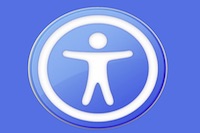Bridging the digital divide for people with intellectual disability
 Recent data from several studies and surveys confirm that our society has entered the digital and information age. Some authors mention that information and communication technologies (ICT) have the potential to enhance people’s power to act and promote equal citizen participation. These elements are particularly important for people living with intellectual disability (ID). However, it seems that the use of ICT is challenging for these people and that a digital divide has gradually formed between them and the connected citizen. The general objective of this theoretical article is to identify and illustrate the dimensions that must be taken into account to promote the digital participation of people with ID. The model is based on a qualitative analysis of scientific publications using a conceptual-style matrix (Miles & Huberman, 2003). The coding categories were derived from two main sources: the accessibility pyramid and the Human Development Model – Disability Creation Process. Five challenges or conditions associated with digital inclusion were identified: access to digital devices, sensorimotor, cognitive and technical requierements and the comprehension of codes and conventions. For each one, the obstacles and facilitators identified in the literature are described. These reflections and principles led us to propose a model in the shape of a gear. The proper operation of the gear system depends on the fit between individual resources and environmental support. The model is a first step to understand the digital inclusion of people with ID.
Recent data from several studies and surveys confirm that our society has entered the digital and information age. Some authors mention that information and communication technologies (ICT) have the potential to enhance people’s power to act and promote equal citizen participation. These elements are particularly important for people living with intellectual disability (ID). However, it seems that the use of ICT is challenging for these people and that a digital divide has gradually formed between them and the connected citizen. The general objective of this theoretical article is to identify and illustrate the dimensions that must be taken into account to promote the digital participation of people with ID. The model is based on a qualitative analysis of scientific publications using a conceptual-style matrix (Miles & Huberman, 2003). The coding categories were derived from two main sources: the accessibility pyramid and the Human Development Model – Disability Creation Process. Five challenges or conditions associated with digital inclusion were identified: access to digital devices, sensorimotor, cognitive and technical requierements and the comprehension of codes and conventions. For each one, the obstacles and facilitators identified in the literature are described. These reflections and principles led us to propose a model in the shape of a gear. The proper operation of the gear system depends on the fit between individual resources and environmental support. The model is a first step to understand the digital inclusion of people with ID.







